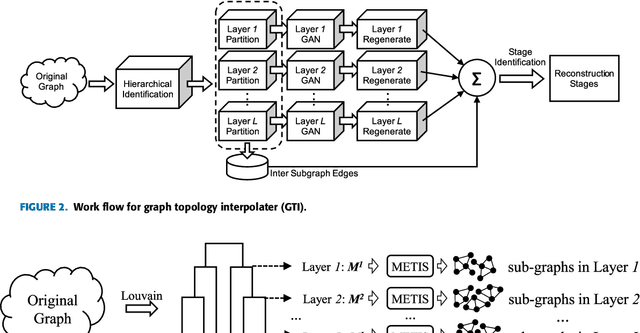Min Hwan Oh
Learning Graph Topological Features via GAN
Sep 13, 2017



Abstract:Inspired by the generation power of generative adversarial networks (GANs) in image domains, we introduce a novel hierarchical architecture for learning characteristic topological features from a single arbitrary input graph via GANs. The hierarchical architecture consisting of multiple GANs preserves both local and global topological features and automatically partitions the input graph into representative stages for feature learning. The stages facilitate reconstruction and can be used as indicators of the importance of the associated topological structures. Experiments show that our method produces subgraphs retaining a wide range of topological features, even in early reconstruction stages (unlike a single GAN, which cannot easily identify such features, let alone reconstruct the original graph). This paper is firstline research on combining the use of GANs and graph topological analysis.
Can GAN Learn Topological Features of a Graph?
Jul 19, 2017



Abstract:This paper is first-line research expanding GANs into graph topology analysis. By leveraging the hierarchical connectivity structure of a graph, we have demonstrated that generative adversarial networks (GANs) can successfully capture topological features of any arbitrary graph, and rank edge sets by different stages according to their contribution to topology reconstruction. Moreover, in addition to acting as an indicator of graph reconstruction, we find that these stages can also preserve important topological features in a graph.
 Add to Chrome
Add to Chrome Add to Firefox
Add to Firefox Add to Edge
Add to Edge